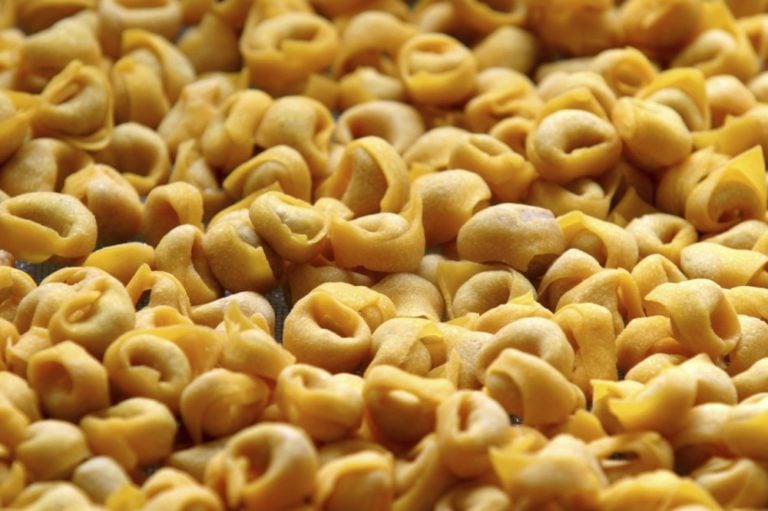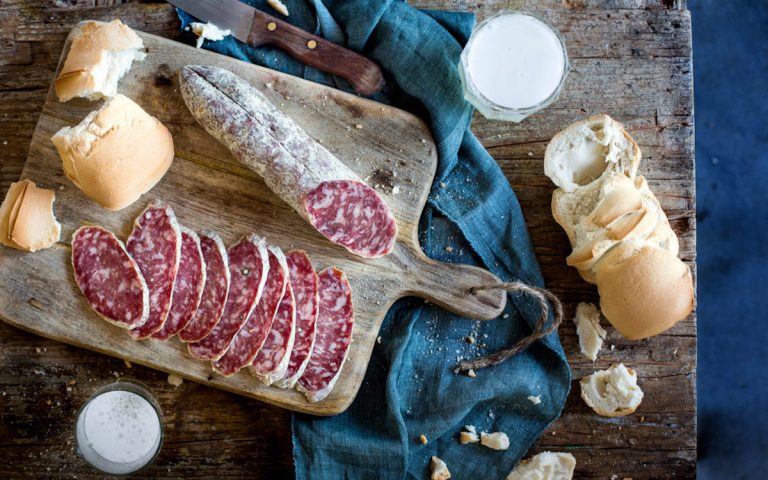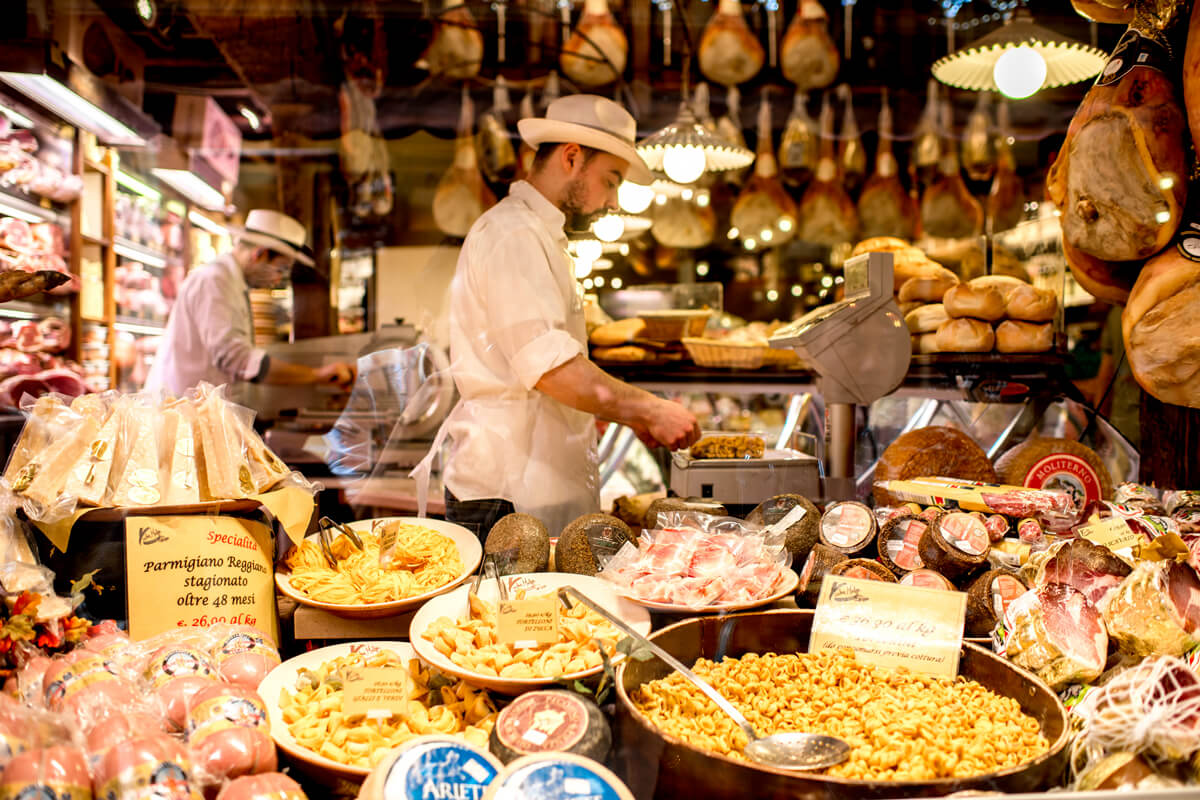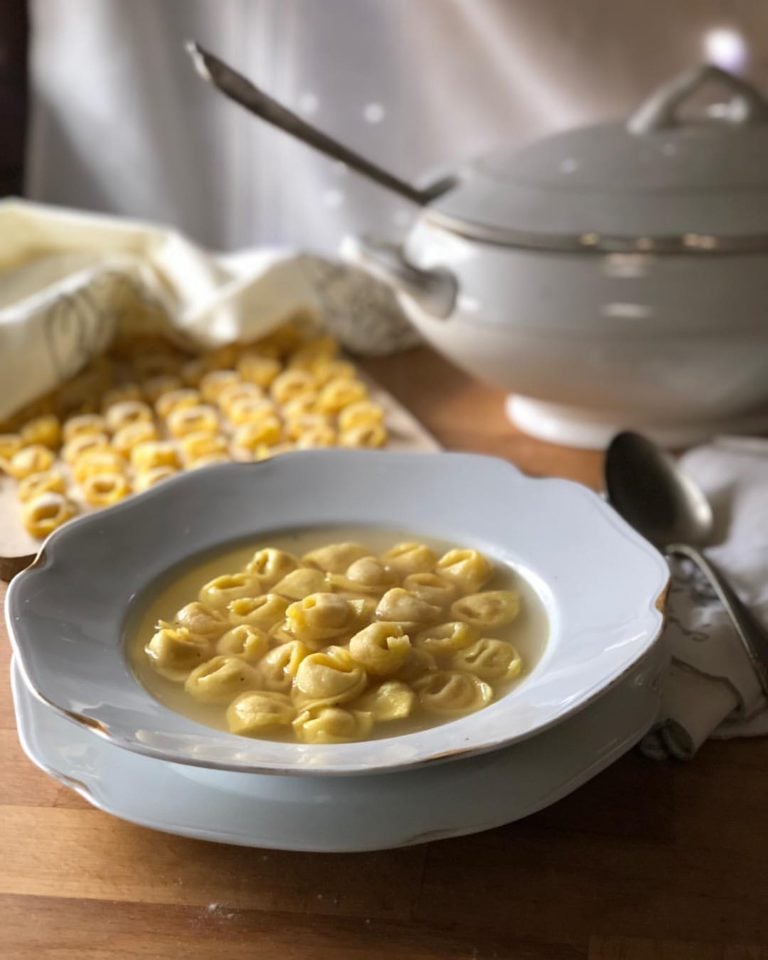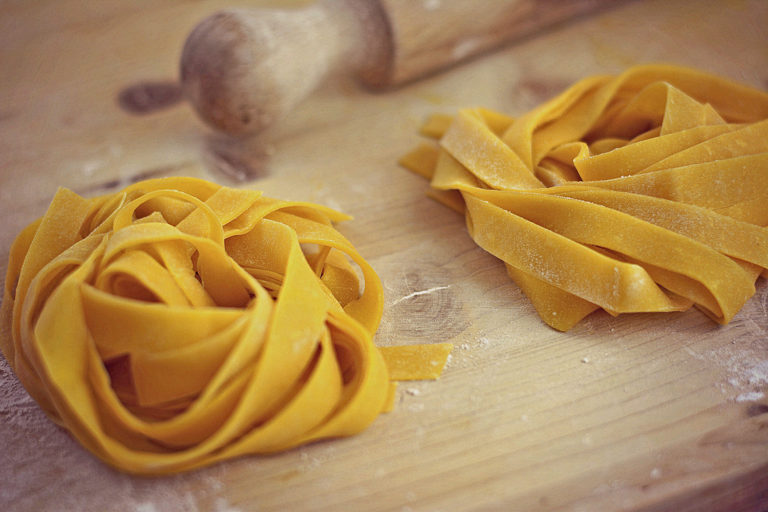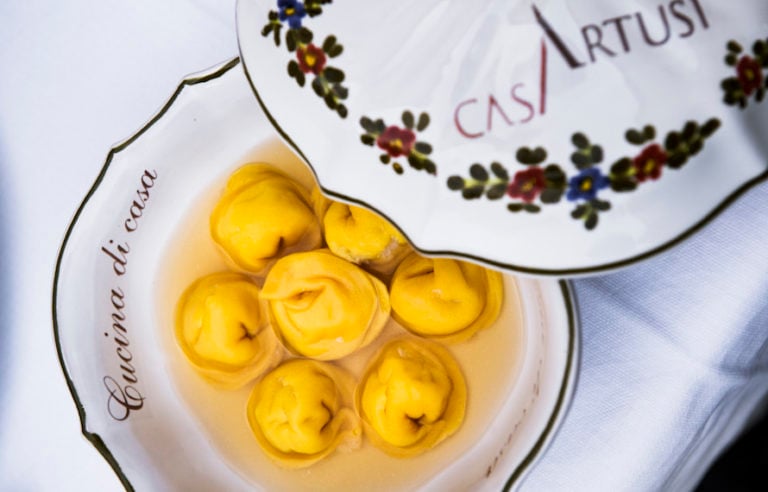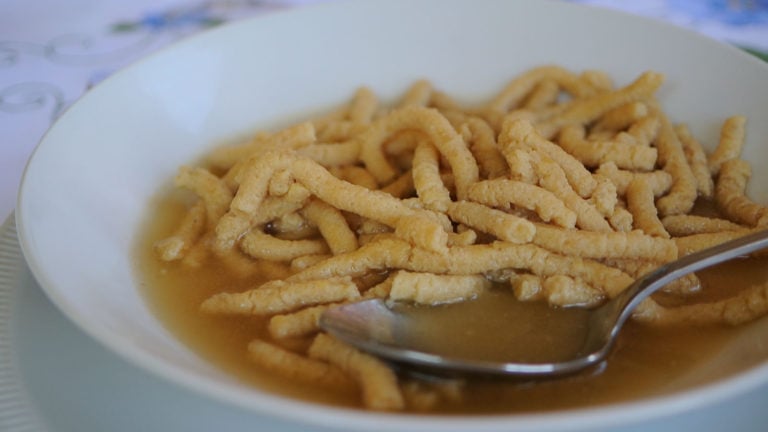October 25 is World Pasta Day, a day dedicated to the recognition and celebration of one of the world’s most beloved and versatile foods.
By some estimates, there are nearly a dozen distinct pasta dishes that hail specifically from Emilia Romagna, the northern region of Italy nicknamed the Food Valley for its vast collection of PDO (Protected Designation of Origin) and PGI (Protected Geographical Indication) products, which are not easy to come by elsewhere.
In recognition of World Pasta Day, below is a list of the five most popular pastas from Emilia-Romagna that you most likely have come across.
Tortellino (or, Tortellini in the plural)
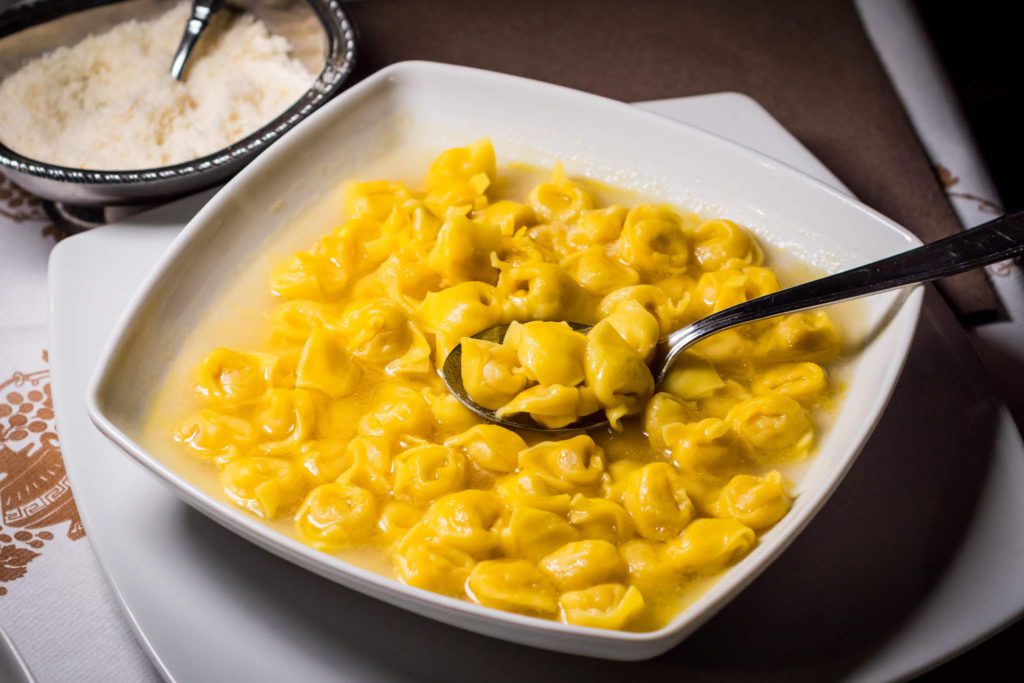
One of the most popular pastas in Emilian cuisine – small, egg pasta caskets cooked in beef and chicken or capon broth, with a hearty filling of meat, prosciutto crudo, mortadella and Parmigiano-Reggiano. For centuries Bologna and Modena disputed the paternity of this dish until Castelfranco Emilia was declared the original birthplace in the 1800s; to this day, the town hosts a Tortellino Festival each September.
Fun Fact: Urban legend has it that the shape was inspired by Venus’s belly button.
Try it yourself: The “official recipe” has been filed with the Bologna Chamber of Commerce by the Dotta Confraternita del Tortellino.
Tagliatelle

The strips of golden egg-dough traditionally served with minced meat-based ragù (sauce), can be easily defined as one of the landmarks of Italian food. Though regions lay claim to have inspired it and have their own version, it was Emilia Romagna’s celebrated 19th century cookbook author Pellegrino Artusi, the “Godfather of Italian home cooking”, who identified the origins of tagliatelle. Though every family makes its own version of the pasta and sauce, since 1982 the traditional recipe for the Ragù Bolognese sauce has been filed with the Bologna Chamber of Commerce, which sanctions the size of the pasta and the ingredients used within the sauce.
Fun Fact: Legend has it that in the 15th century, a lord of Bologna had his chef prepare tagliatelle in honor of Lucrezia Borgia, who was heading to Ferrara to marry the Duke; the pasta strips were in admiration of her long, golden hair.
Try it yourself: The “official” recipe for Tagliatelle, filed with the Bologna Chamber.
Lasagna alla Bolognese
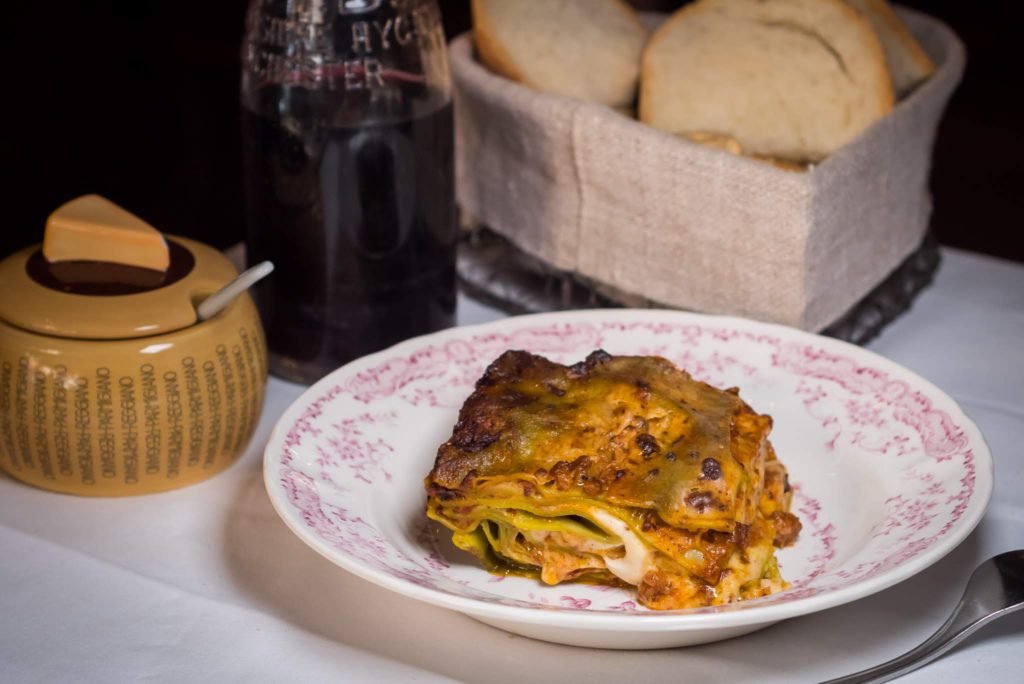
Though there are many recipes and variations, the traditional Lasagna alla Bolognese is a first course consisting of layers of thin pasta dough made with flour, egg and spinach; between each layer are ragù sauce and béchamel and the top layer is lightly sprinkled with Parmigiano-Reggiano cheese.
Fun fact: The practice of boiling mixtures of water and flour dates back to the Middle Ages but eggs would not be used in the dough until the Renaissance, and the use of tomatoes and the practice of layering lasagna did not appear until the nineteenth century.
Try it yourself: The “official” recipe mandates the use of egg pasta dough with spinach, ragù sauce, and béchamel.
Cappelletti
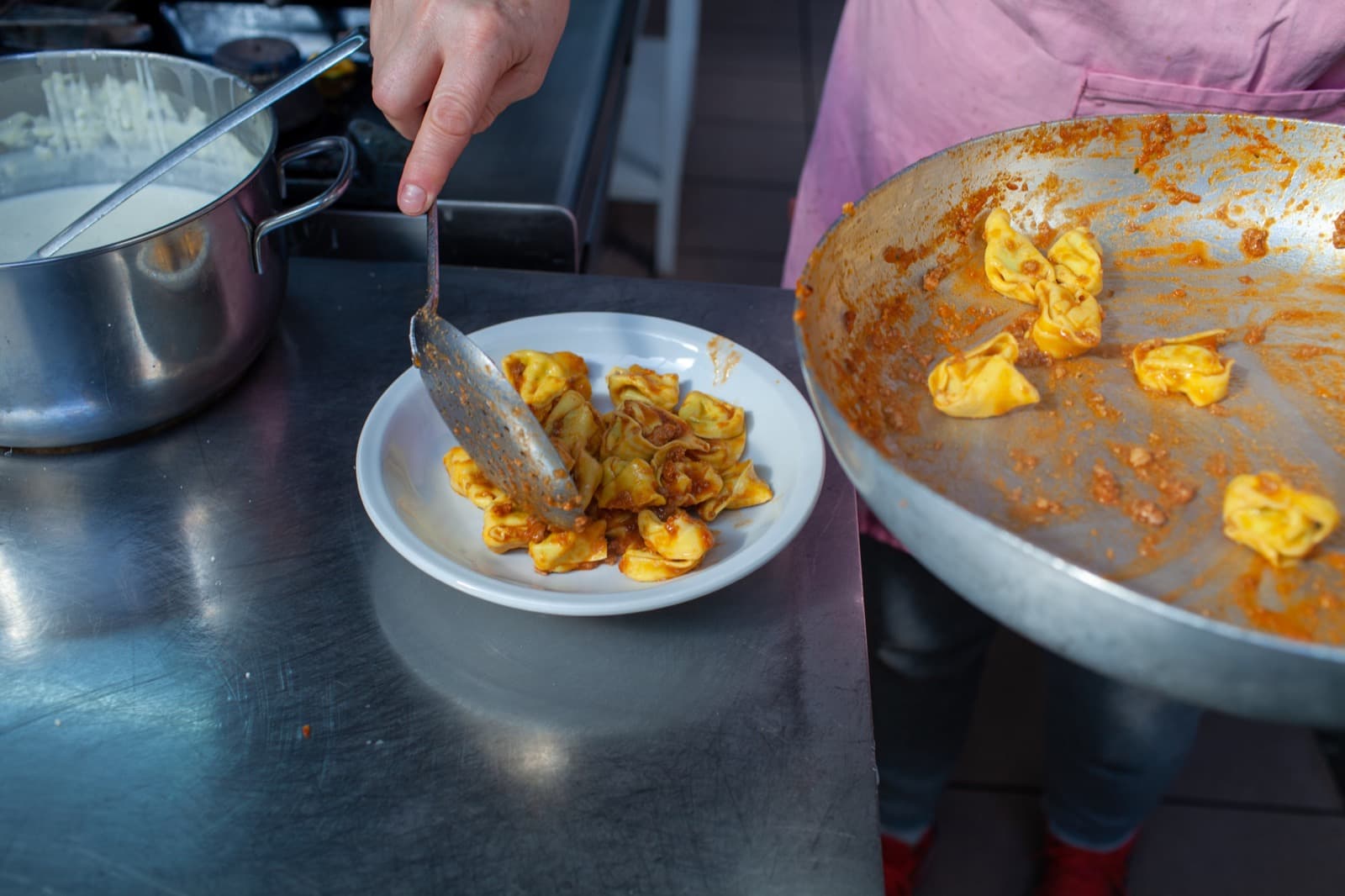
Among the most genuinely traditional recipes of the Romagna region, the Original Cappelletti, or “Caplét” as they say in dialect, is one of the most famous recipes in Italian cuisine. Their shape is reminiscent of the “galoza”, a winged headdress worn by Italian country people, making it especially appreciated by locals. The recipe involves the preparation of the classic pasta with flour, eggs and a little water, resulting in hand-rolled dough that is cut into squares and folded.
Fun Fact: Traditionally, preparation took place the evening before the meal and the Cappelletti were handmade “one by one” involving all the women and children of the house; fillings vary based on region, with some areas not filling the dough at all.
Not to be confused with Tortellini, which is folded a different way, sized differently and typically contains meat.
Passatelli
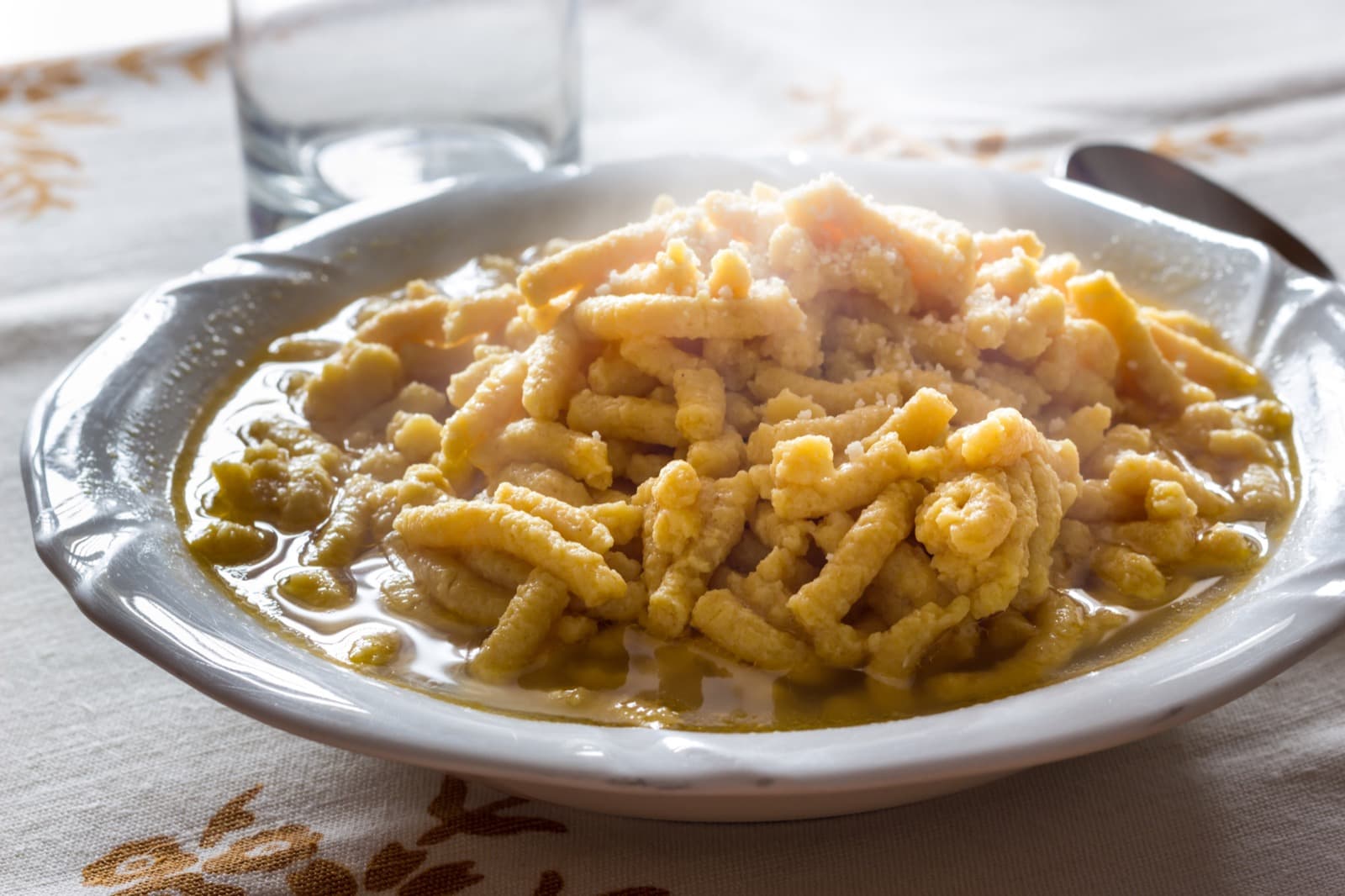
This pasta is exclusively hand-made with kitchen scraps such as breadcrumbs, cheese, eggs and spices. Originally seen as a poor but tasty dish, Passatelli is now recognized as a comfort food and often eaten in broth.
Fun Fact: “Passatelli” stands for “going through” the iron used to make them. In the past, passatelli were prepared only for important occasions since Parmigiano Reggiano cheese was a real luxury back then.
For pasta lovers that find themselves in Emilia-Romagna, a cooking class at Casa Artusi is certainly in order. Founded in honor of the “Godfather of Italian home cooking”, Pellegrino Artusi was the author of the first Italian cookbook in 1891, “La Scienza in Cucina e l’Arte di Mangiar Bene” (Science in the Kitchen and the Art of Eating Well). Learn how to make traditional Italian dishes such as pasta with ragù alla Bolognese, just like Stanley Tucci did when he visited Casa Artusi during the filming of his hit show, Searching for Italy.
Author
You may also like
5 food experiences not to be missed in Emilia Romagna
by Elisa Mazzini /// September 6, 2016
All the flavors of pork: PDO and PGI of Emilia-Romagna
by Elisa Mazzini /// March 26, 2024
Emilia-Romagna’s Food Markets that You cannot miss!
by Davide Marino /// March 15, 2023

Interested in our newsletter?
Every first of the month, an email (in Italian) with selected contents and upcoming events.
History and recipe of the Tortellino, king of Christmas (and beyond)
by Elisa Mazzini /// December 4, 2019
Tagliatelle: a pasta that made Emilia Romagna’s history
by Davide Marino /// May 17, 2020
Original Cappelletti: the handmade pasta from Romagna
by Walter Manni /// April 3, 2019
A Romagna’s remedy for the cold weather: passatelli in broth!
by Arturo Castellini /// November 15, 2019
